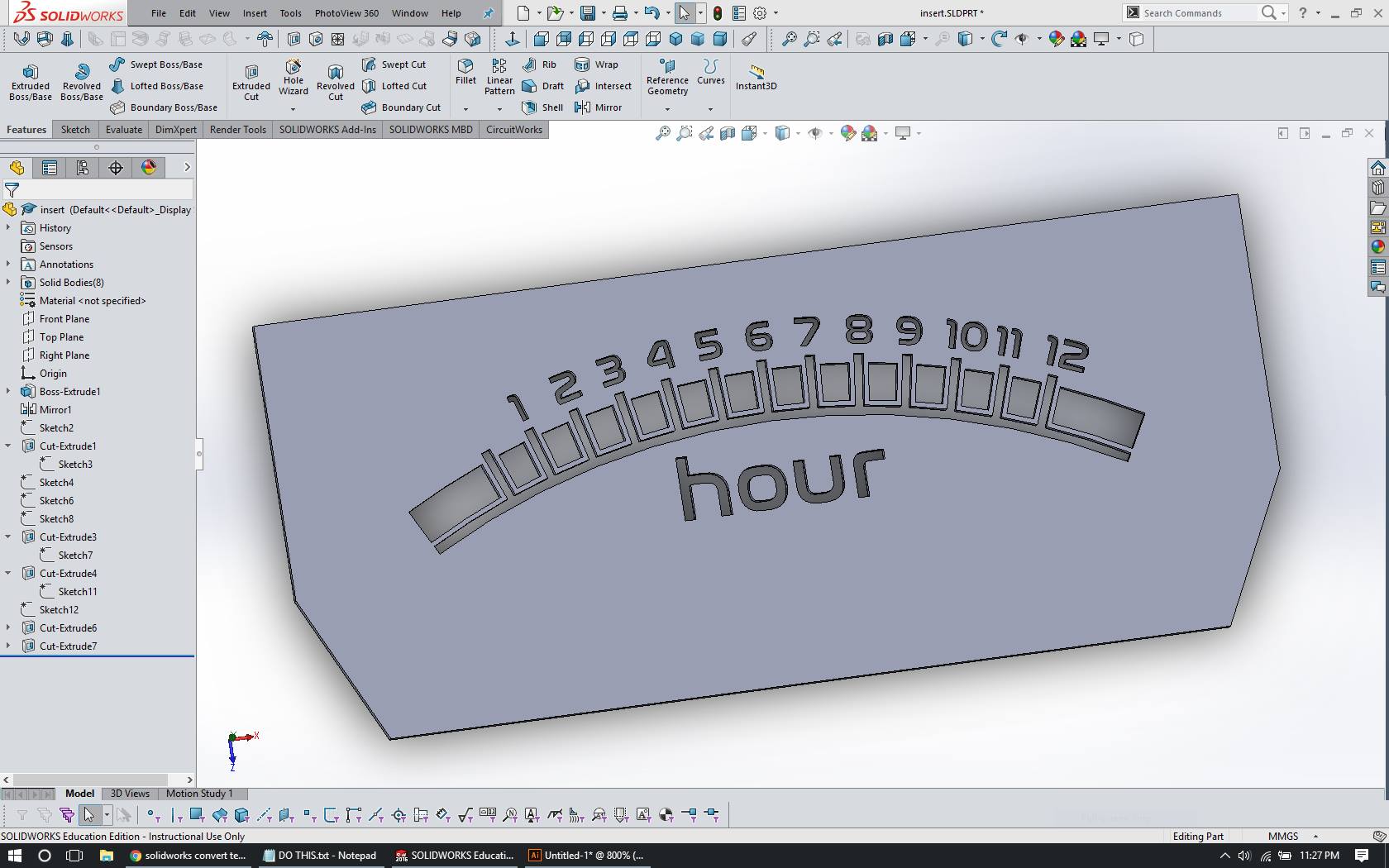01/8/2017
removing a truck engine
I've been home for the holidays and helping my dad get further on his engine rebuild project for our family's Yukon. This is just a quick entry to document the fun I had with my dad.
The main thing I did to help out was fabricate a cover plate out of some steel plate to hoist the engine. I traced the outline and hole pattern using the valley cover and used an angle grinder with a cutoff wheel to cut the outline. A step drill made easy work of the mounting holes.
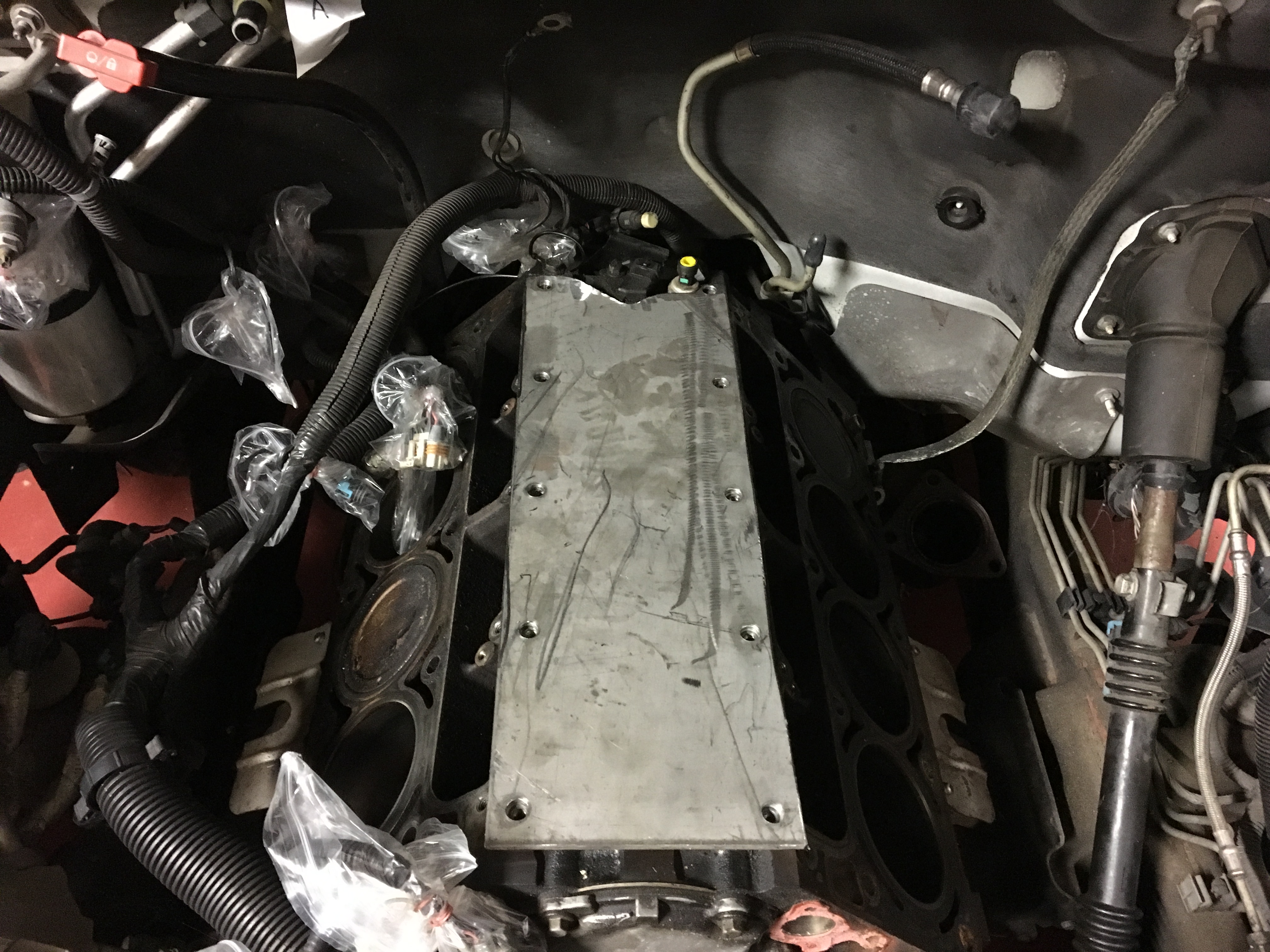
After I made sure the hole pattern was correct and it would fit, I drilled two holes in the top to mount the engine hoist to. Here's a photo of my dad, smiling since he's been trying to get the engine out for a while.
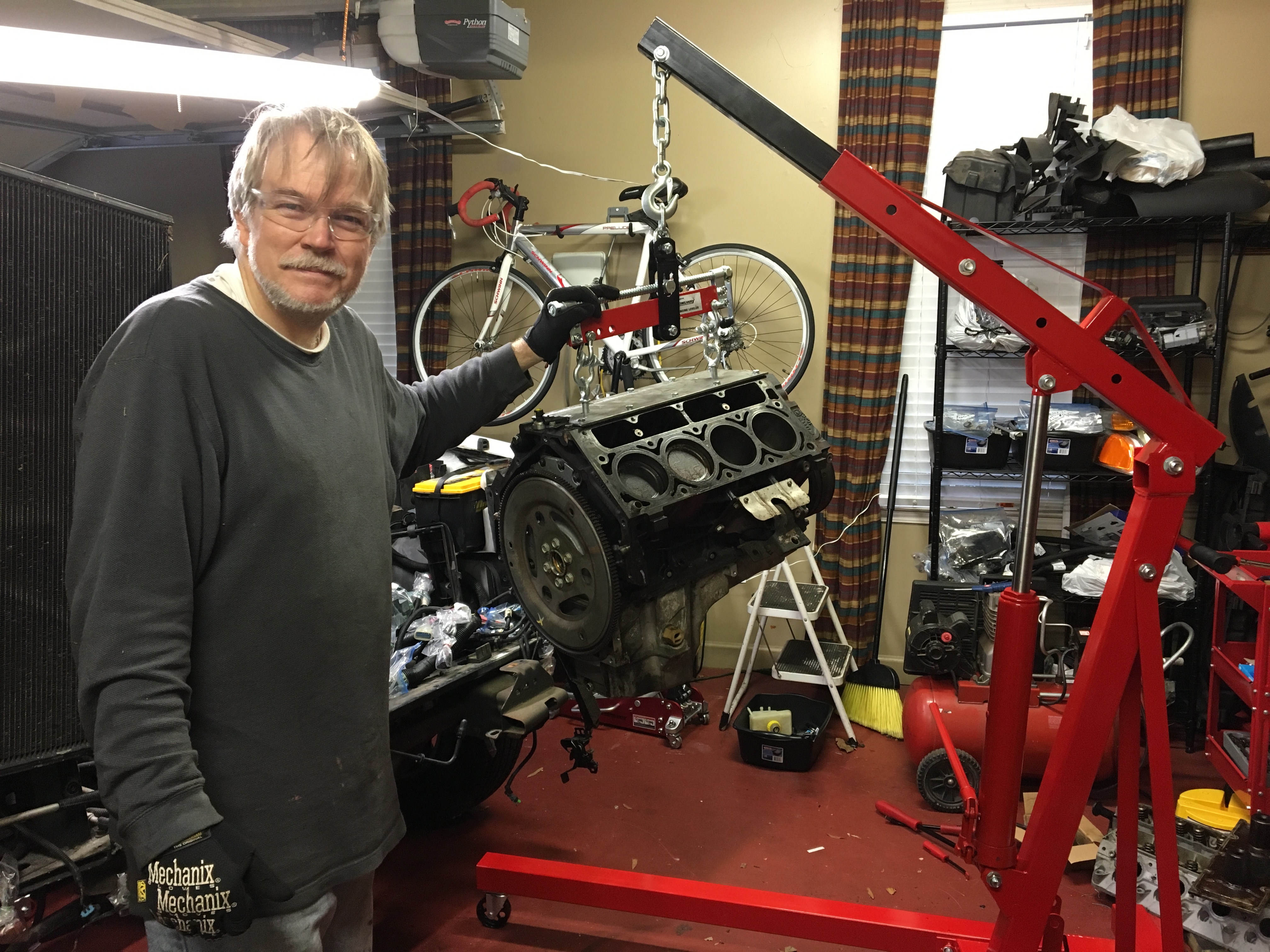
To get the transmission out, the driveshaft had to come out. So here's me with a driveshaft.
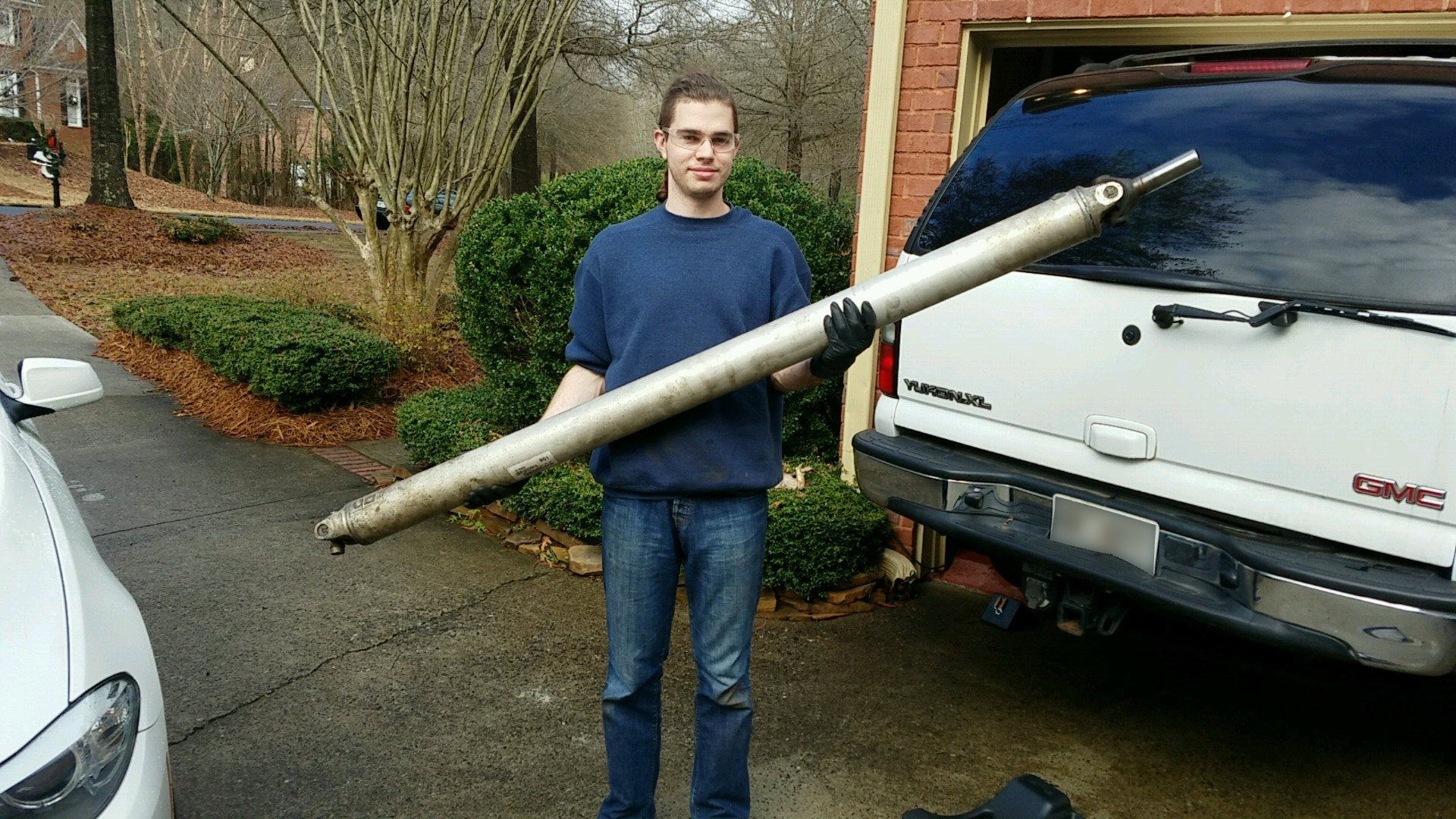
The transmission came out with a transmission jack. We didn't have enough height under the frame of the car to roll it out on the jack, so we lifted it off the jack onto a plastic storage container top. Once it was on the top it slid right out from under the car. We technically could have removed the engine and the transmission as one unit, but our garage didn't have enough space to do so.
Anyway, here's another photo of my dad smiling with a thumbs up. This time with the transmission.
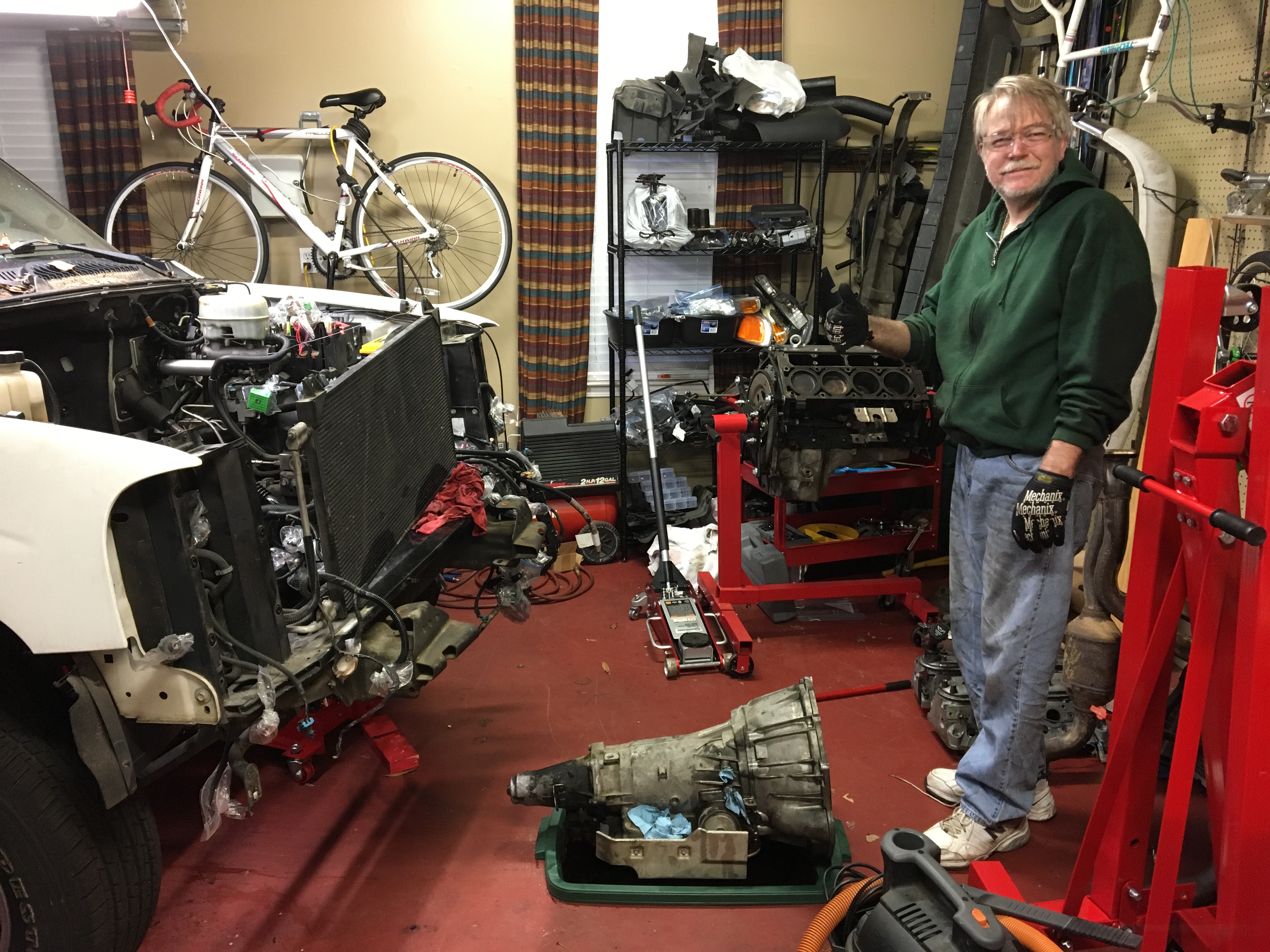
01/4/2017
simulating a clock of clocks
I saw this video of a really neat clock in a Nike store in Boston a while ago. I don't know who was the first to build one of these things, but there's a few of them. Another really gorgeous one is A Million Times by an art studio in Stockholm. Anyway, I really want to make one.
I've been eying some really tiny stepper motors and I've bought a few on Alibaba and Ebay to see what they're like. I'm not 100% sure how I'd like to structure the hardware, but it seems like I could make a whole bunch of tiny networked clock modules, each controlling two stepper motors. While I'm figuring that out, I wanted to play with how it would look. So I decided to learn a bit about p5.js which is a Javascript port of Processing.
I don't think the code is anything special. Since this was meant to be a simulation of the motors themselves, each pair of hands is driven by virtual motors which can be assigned a speed, as opposed to being assigned a position. I did have a bit of fun implementing the easing to slow the hands down before reaching their final places. I also introduced a bit of randomness in the travel time of each hand to reach the new destination, this gives the display a cool "convergence" effect.
Here's a short clip. Sorry that it doesn't display actual times, just random 4-digit numbers.
Just a quick update on the VU meter clock.
I got around to painting it the other day. The matte black (just the cheapest plain Rustoleum cans) came out incredibly well. In fact, I don't think I've ever had a paint job come out this well.
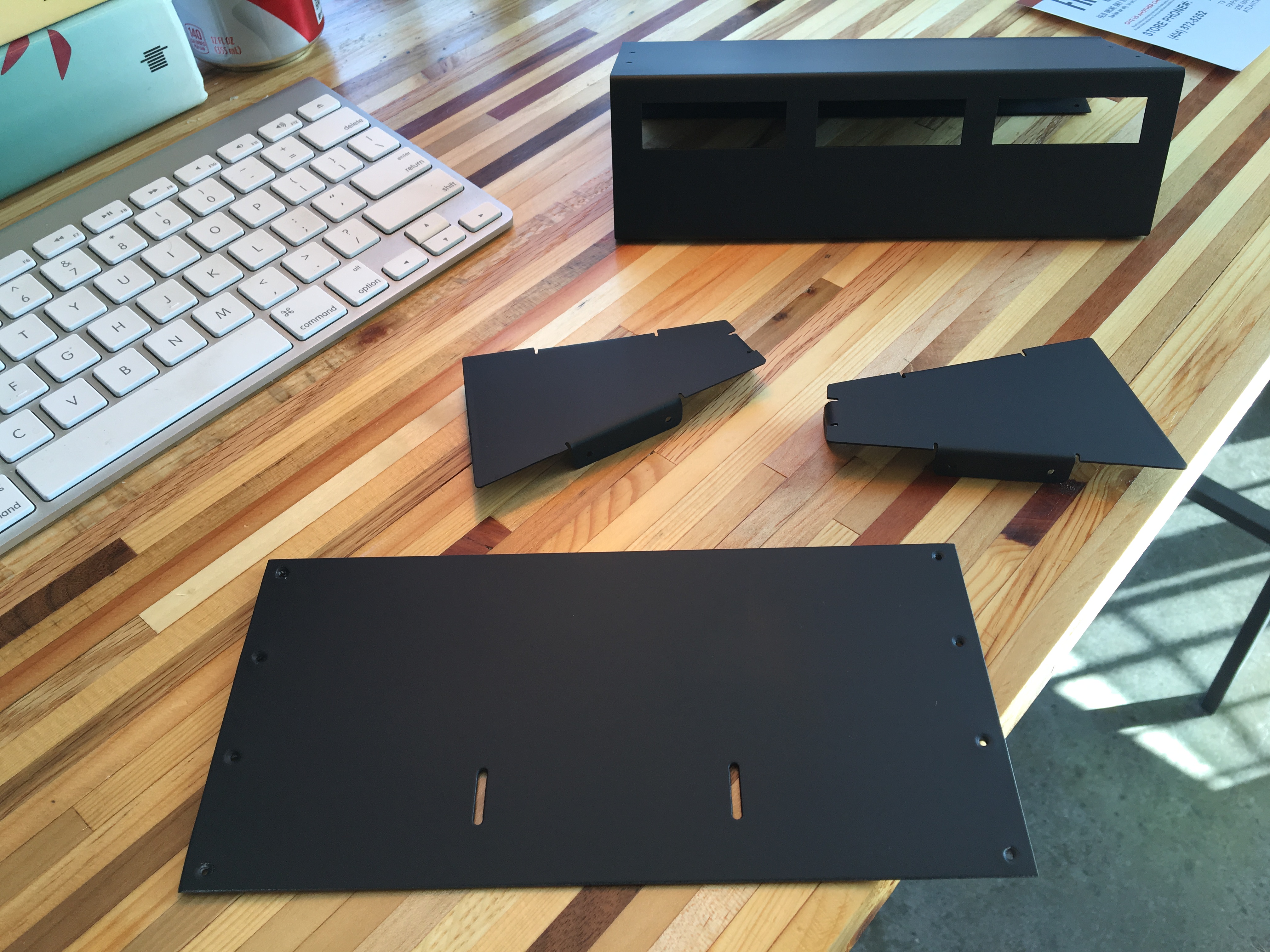
I've also been working on the new designs for the meter readouts. I tried to do this in illustrator, but I wanted to position text accurately against an arc, and I was having a really difficult time of making it precise. I figured I already had a model of the meter in Solidworks, so why not do it there. So that's what I did. This sketch is horrendous, but it worked great.
